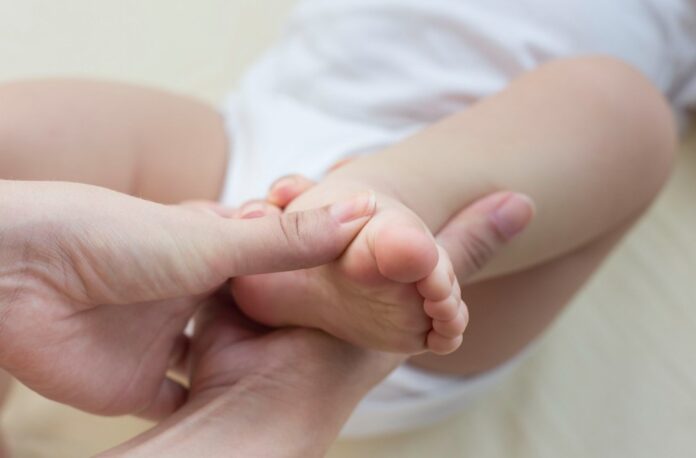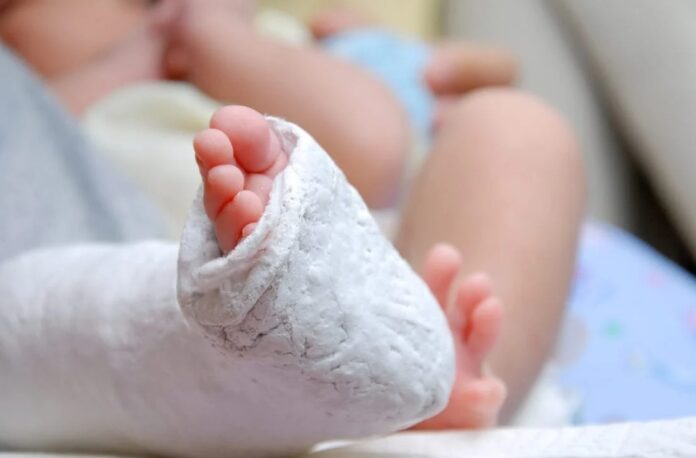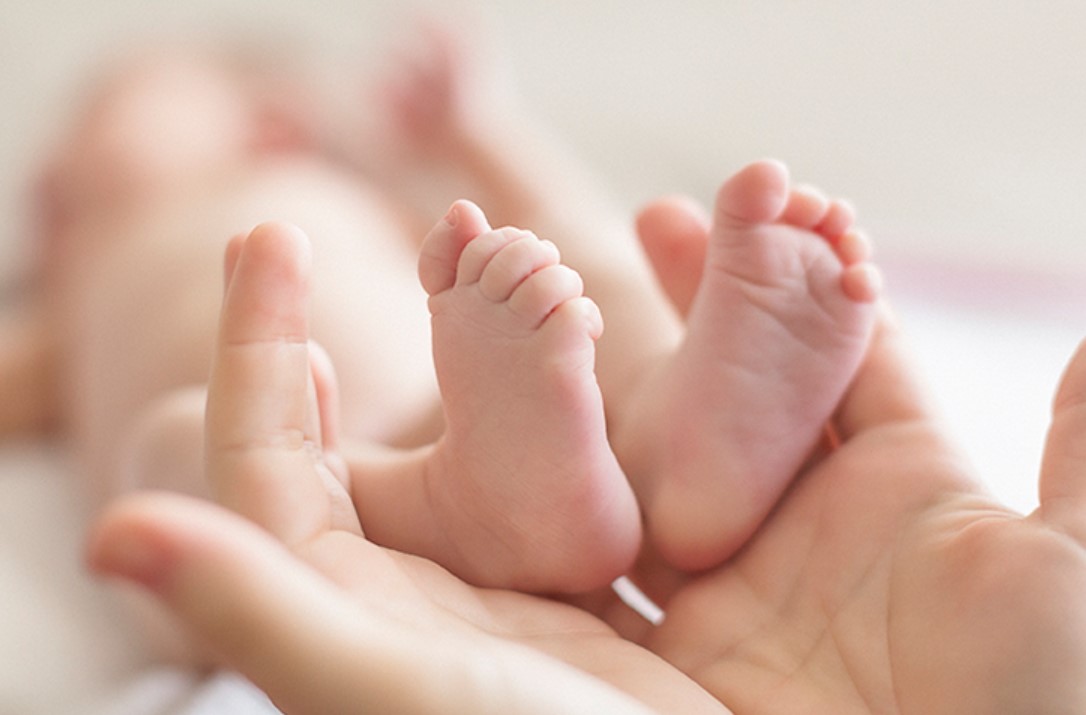The talipes equinovarus (TEV) is the most common congenital disorder of the foot, and it affects about 2% of newborns. This condition is also known as clubfoot. Infants with talipes are more likely than healthy infants to have additional problems affecting growth and development.
The type of treatment depends on your baby’s age and symptoms. Mild cases may not need any specific treatment, but if they do, your doctor might suggest physical therapy or special shoes with a flexible sole that helps turn the foot inward.
Severe cases require surgery to reposition the foot into a normal position while still allowing growth. The following are ways in which talipes in babies can be corrected;
Using wooden splints

The use of splints has become quite common to correct Talipes. A splint is a device made specifically to correct a baby’s talipes equinovarus gently. First, you can use a wooden spoon as an improvised splint. Later on, as the child grows, you can use orthopedic devices specially made to effectively correct foot deformities.
However, while using splints, the child often ends up taking off the splint by herself. A clever walker was created to allow the child to practice walking while creating the sideways support needed to help them balance and prevent unwanted falls.
The walker takes on the shape of a cage, so it will not allow the child’s feet to touch the ground, thus eliminating the chance they will unhook their hands and try to walk unassisted.
Using casts

Casting is a non-surgical treatment for clubfoot that uses custom-made devices to align and gently stretch the foot to grow appropriately. A cast can support the foot and ankle properly while the bones are growing and fusing. Treatment with casts is generally preferred because they’re easy to use, comfortable and inexpensive.
The surgeon will typically remove the cast in 4-6 weeks, and then you’ll have to wear a brace or use crutches for another 4-6 weeks after that. A specialist monitors the baby to make sure he moves his foot correctly during healing. It’s used for mild cases of clubfoot and can also be used for older children and adults who have had corrective surgery on their feet.
Surgery

Surgery isn’t usually recommended unless there are problems that can’t be corrected with casting or if the baby needs a more complicated procedure than can be done with casts.
The American Academy of Orthopedic Surgeons advises that surgery should take place before three months of age when the bones in the foot are still soft; otherwise, there is a risk they won’t grow properly without treatment. Surgery tends to be more expensive and, although it offers more flexibility, it can take longer to complete, meaning a more extended time in which the child has to wear a cast or boot.
Whether to correct it surgically or not depends mainly on the patient’s age and the severity of his condition. Factors such as how well he will tolerate surgery and the expected outcome from both options are also considered.







